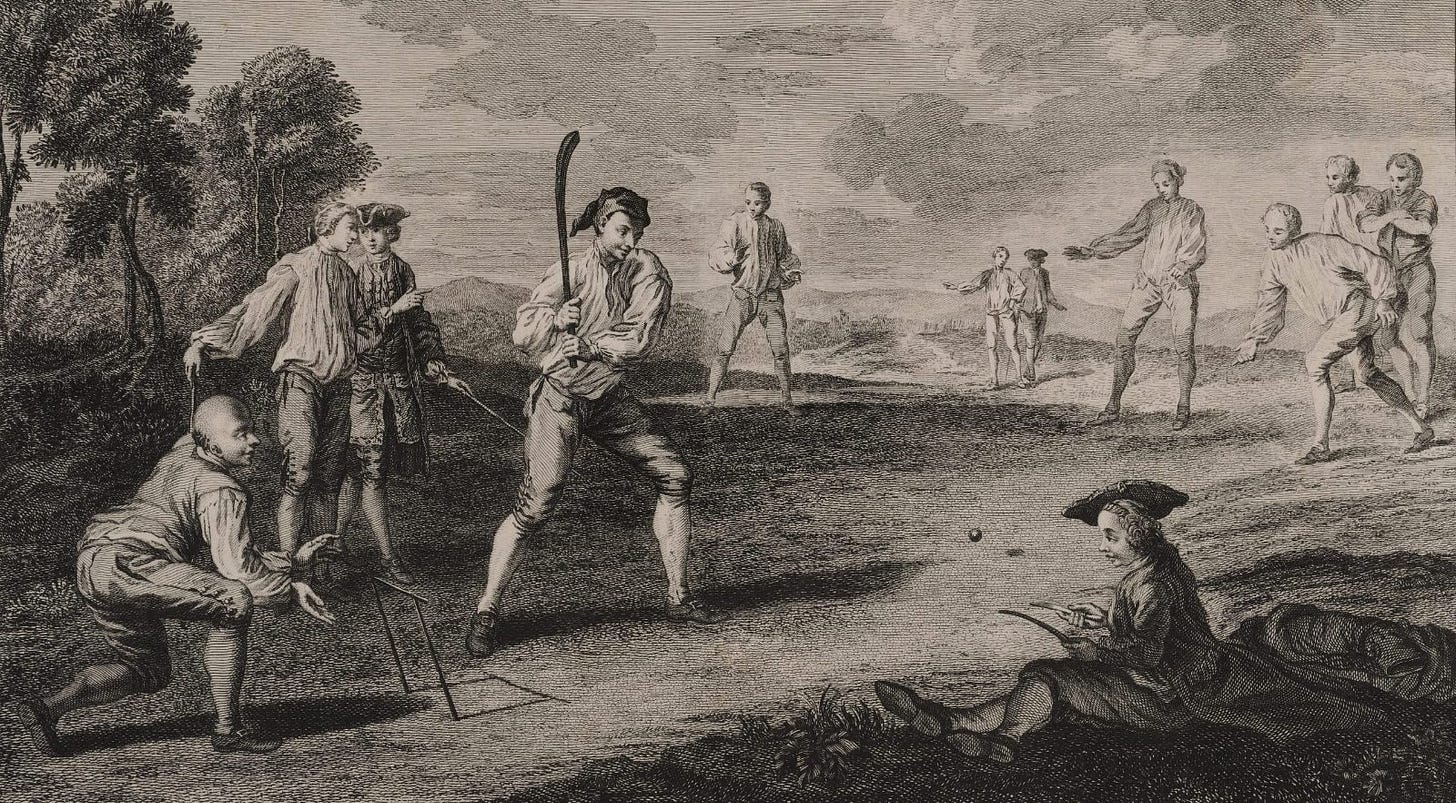The Evolution of Cricket 🏏
6 minute read · Issue Number 103 · January 14th, 2022
Did you know that cricket is the second most popular sport in the world, right behind soccer (in terms of followers & supporters)!?
Last week, I released a podcast episode with the founder of a cool cricket technology platform — and during the interview, I realized just how little I knew about the sport.
The best way to learn about something is to dig into its history. I went down the rabbit hole and spent hours learning about cricket’s origins, evolution, and developments. Here’s the quick summary of everything I found:
The Origins of Cricket
The first reference to cricket being played as a sport was in 1611, in the open fields of southeast England.
However, some believe cricket started long before, tracing it back to the end of the Roman Empire and the start of the Norman invasion in 1066.
Ancient shepherds played with their crooks (aka their staff) standing in a field. The basic idea was to bowl or roll a ball of rags or wool at a target. There were many different games played under various local rules – but what’s consistent amongst most records is that people used to hit the rolled ball with a stick or ‘bat.’
The shepherds’ crook was called a ‘cricce’ – hence, deriving the word to what we know today as ‘Cricket.’
County teams began to emerge during the second half of the 17th century, and the first official game ever recorded happened only in 1709 between Kent and Surrey.
The MCC (one of the first cricket clubs ever founded) drew up the first laws and rules of cricket in 1744, and the game was taken mainly by the aristocracy (i.e., the highest socio-economic class).
The matches were big social events, played at grand country house venues, where it often involved the wagering of substantial amounts of money on the outcome of individual games.
Global Expansion
Cricket quickly established itself as a leading sport in London and the southern counties of England, where British traders, settlers, administrators, and soldiers from the British Army played.
By the late 17th and early 18th centuries, cricket arrived to other parts of the globe such as North America via the English colonies, India (through East India Company mariners), Australia (during the 1788 colonization), New Zealand, and South Africa in the early 19th century.
Indian princes were mesmerized by the game, which caused its spread throughout the area relatively quickly.
The Development of Modern Cricket
Cricket faced a lot of significant changes during the following centuries.
Think of this time as the years where millions of iterations happened to find best practices for the game.
Better equipment and innovative forms of playing were introduced (i.e., delivering the ball, throwing, practicing), and coaches, players, and athletes adapted specific techniques through trial and error.
Until the foundation of the International Cricket Council (ICC) in 1909, cricket became popular amongst the less privileged classes, which caused the game to take off in popularity and become what it is today.
The Bottom Line
Similar to entrepreneurship, products first tap the high-end markets before they scale to everyone; cricket was firstly adopted by the aristocracy and then spread out through colonization.
It is a sport with centuries of tradition and history.
However, one question remains in my head: what happens next with cricket?
Even though the ICC has continuously focused on innovating the game to grow the sport worldwide, it feels like there’s still a lot to go, given that only a few countries in the world play it professionally.
🎙 Halftime Snacks Podcast
Preparing Athletes On and Off the Field
Scott is an expert in design, performance, and technology.
He’s the CEO and founder of BeONE Sports – a platform that uses AI to help young athletes maximize their performance, gain exposure for their talents, and get advanced training on demand.
We talked about:
Scott’s background as a semi-professional athlete and how it ties to BeONE
BeOne from idea to product to monetization
Strategic growth for BeONE
Scott’s vision for the future of young athletes & NIL
Listen on Apple | Spotify | Google
Follow the Halftime Snacks on Twitter | Instagram | LinkedIn





